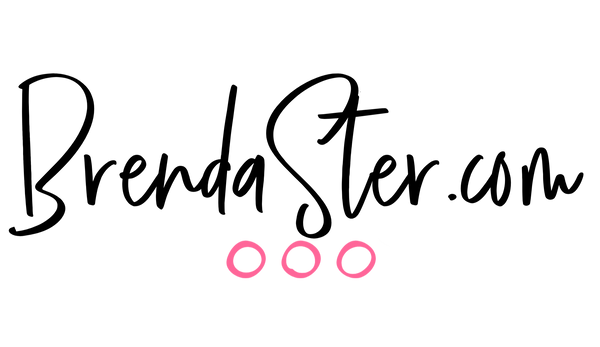If you've ever heard someone say, "You need to build a funnel," and immediately thought, A what now? Like the kitchen thing?, you're not alone. Funnels get tossed around like buzzwords in the marketing world, but no one ever seems to explain what they actually are in real human terms.
So let’s break it down.
If you're in direct or social selling, you already have a marketing funnel, whether you know it or not. But understanding it? That’s where the magic starts to happen.
What is a Marketing Funnel (in plain English)?
A funnel is just a fancy way of describing the journey someone takes from first discovering you to becoming a loyal customer and fan.
Imagine pouring sprinkles into a funnel to decorate a cupcake. At the top, there’s a lot going on. But by the time they make it through the funnel, you’ve got a pretty little cupcake with the exact sprinkles you wanted. In marketing, those sprinkles are people. (Stick with me here.)
Not everyone who finds you will buy from you. A funnel helps filter and guide your audience through stages: from curious browsers to confident buyers and raving fans.
Let’s look at those four funnel stages using language that actually makes sense.
Stage 1: Awareness (They Just Found You)
This is where people first stumble upon you.
They don’t know what you sell. They don’t know who you are. They may not even be looking for what you offer. But something about your content or presence caught their attention.
Examples of Awareness Content:
- A Reel showing how you organize your makeup drawer with your favorite products
- A funny post about being a busy mom who still wants to look cute
- A Pinterest graphic about summer party ideas using your brand’s decor line
Goal: Make them stop scrolling. Make them say, “Ooh, I like her vibe.”
Stage 2: Consideration (They’re Getting Curious)
Now they’ve followed you, maybe watched your Stories, maybe even liked a few posts. They're considering whether you’re someone they want to buy from.
They’re asking:
- Do I trust her?
- Does this product fit my style, my budget, my needs?
- Can she help me?
Examples of Consideration Content:
- Before/after photos or tutorials showing your product in action
- Testimonials or reviews from happy customers
- Behind-the-scenes peeks into how you run your business or choose products
Goal: Build trust. Help them picture themselves using what you sell.
Stage 3: Conversion (Time to Buy!)
This is where they go from "thinking about it" to "adding to cart."
Your job now is to make it easy to say yes.
Examples of Conversion Content:
- A clear call to action: "Shop now! Only 3 left."
- A time-limited offer or bundle
- A reminder that your order deadline is tonight
Goal: Create urgency, clarity, and a no-brainer reason to buy.
Stage 4: Advocate (Happy Customer, Raving Fan)
This stage is so underrated.
You’ve made the sale. But now’s your chance to turn a happy customer into your best marketing tool. Because when she loves her order? She tells her friends.
Examples of Advocate Content:
- Ask her to post a selfie with her new product and tag you
- Offer a referral reward or affiliate program
- Invite her into your community (Facebook group, email list, etc.)
Goal: Keep the love going. Encourage sharing, referrals, and repeat business.
So... What Does a Funnel Do?
It helps you:
- Understand where your followers are in the buyer journey
- Create content that speaks to the right stage
- Gently guide people from stranger to shopper without being salesy
The truth is, you don’t need complicated tech or a million-dollar ad budget to have a funnel. If you’re posting regularly and showing up with intention, you already have one.
But if you want it to work, you’ve got to build it on purpose.
Considerations for Direct & Social Sellers
If you're a direct or social seller, your funnel doesn’t live in a fancy software. It lives in your content. Your stories. Your inbox. Your follow-ups.
Here’s how it might look in action:
- Awareness: Someone finds your viral TikTok about summer skincare tips
- Consideration: They follow you and watch your GRWM (get ready with me) video using the brand’s new SPF
- Conversion: You message them a limited-time bundle link that includes the SPF and moisturizer
- Advocate: They post a selfie and tag you, and you shout them out in your Stories
Pro tip: You can have multiple people in different funnel stages at the same time. Not everyone is ready to buy today, and that’s okay.
The key is to consistently create content that speaks to each of those stages. That’s how you build trust, relationships, and ultimately? Sales.
Final Thoughts
A funnel isn’t a tool. It’s a strategy.
It’s about showing up with purpose so your content doesn’t feel random, rushed, or scattered. When you understand where your people are in their journey, you can meet them with the exact message they need to move one step closer to buying.
Start small. Look at your last 5 posts. Which stage do they fall into?
If you’re heavy on Awareness and light on Conversion? Now you know where to fill the gap.
You’ve got this.
Are you clear on your next best step in your business?
Take my FREE quiz to find out!

